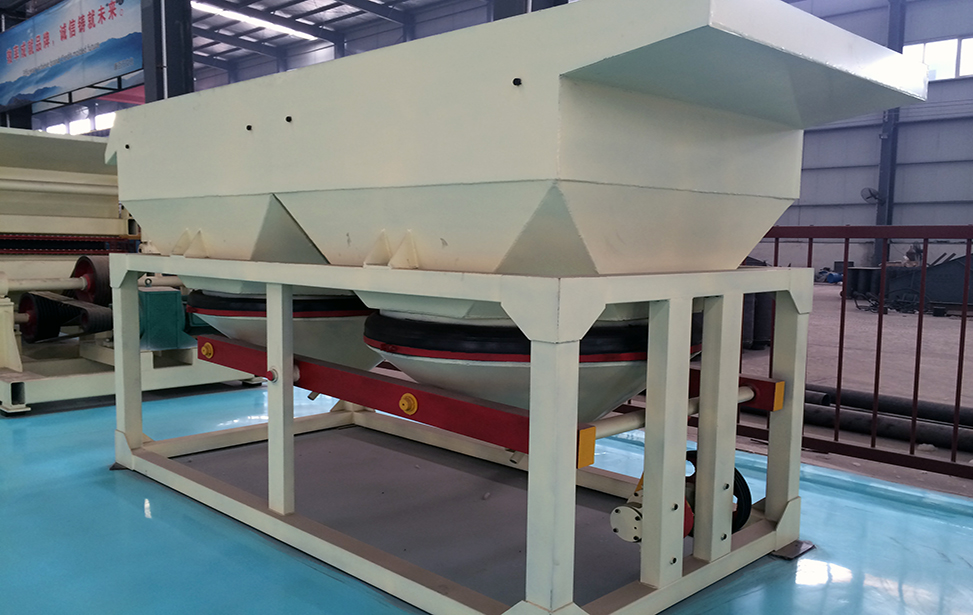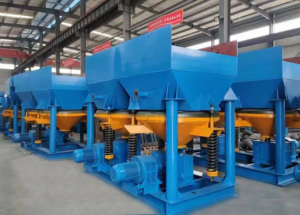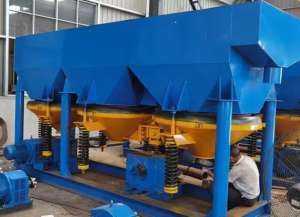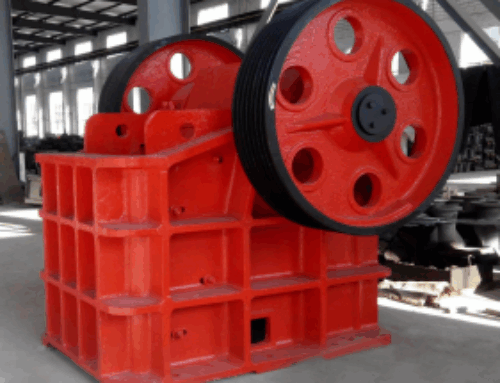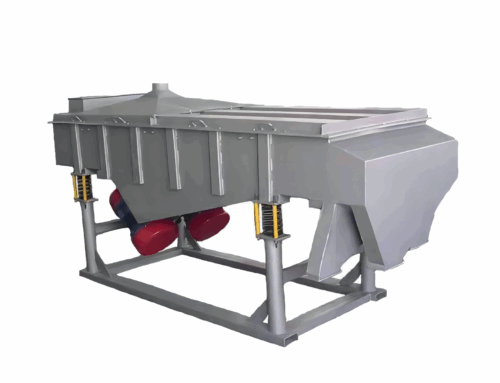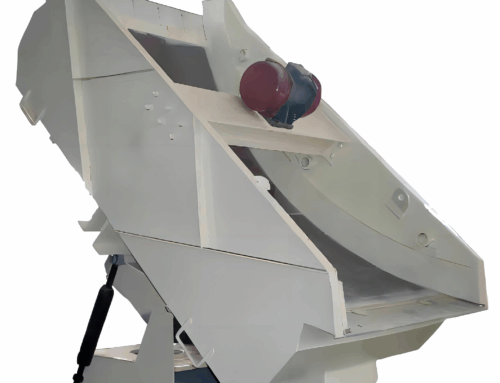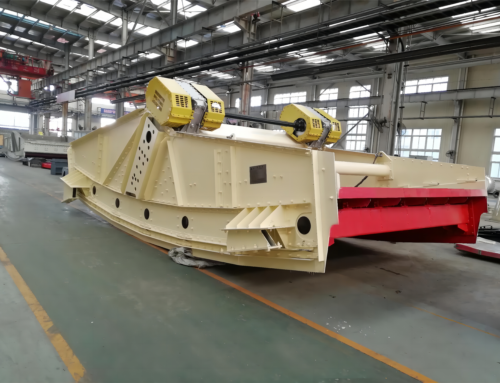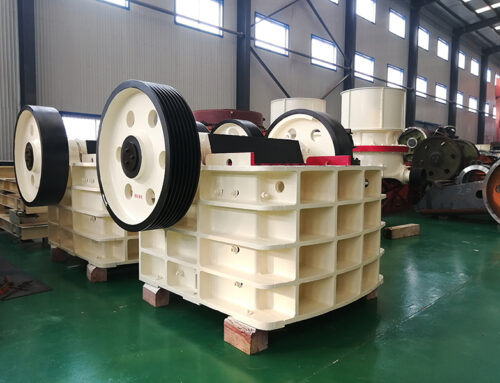In the field of building materials production, from the cornerstone of skyscrapers to all kinds of decorative materials in daily life, the quality of building materials is directly related to the safety and beauty of the building. The jigger is one of the key equipments to guarantee the quality of building materials and improve the production efficiency. Through its unique working principle, it carries out fine sorting of all kinds of building materials, lays a solid foundation for the subsequent processing procedures, and is an indispensable helper for the building materials industry to achieve high-quality development.
一.The working principle of jigging machine revealed
1.The core mechanism of gravity sorting
The working principle of a jigger is essentially based on the subtle mechanism of gravity sorting. Inside the jigger, the mineral particles are placed in a special environment created by water flow and air. Since different minerals have different specific gravities, it is as if different weights were placed in the water, with the heavier ones sinking and the lighter ones floating. Specific gravity of the larger mineral particles, driven by the water flow, although it will also follow the ups and downs, but because of its own mass is larger, it is easier to overcome the upward impact of the water flow, and gradually to the bottom of the jigger to sink; while the specific gravity of the smaller mineral particles, it is easier to be upward of the water flow coercion, moving towards the top. This stratification phenomenon based on the difference in specific gravity of minerals is the cornerstone of the jigger to achieve accurate sorting.
2.Synergistic operation of water flow and air
Water and air are the key media in the jigger. Water flow, as the direct carrier of mineral particles, its pulsation characteristics are crucial. In the working process of the jigger, the water flow periodically rises and falls, forming a variable speed flow environment. When the rising current rises, it provides upward momentum for the mineral particles, making the original tightly packed mineral bed gradually loosen up, creating conditions for the transposition of particles of different specific gravity; and when the falling current comes, the mineral particles further adjust their position under the dual action of gravity and the drag force of the current. At the same time, the pulsation of the water is energised by the intervention of air. Through a compressed air system, air is injected precisely into specific areas of the jigger, instantly changing the local pressure, which in turn encourages the water to move more rapidly. This close co-operation between air and water makes the mineral particles undergo a highly efficient sorting in the jigger, ensuring that minerals with different specific gravity can be accurately separated, providing a solid guarantee for the subsequent high quality processing of raw materials for building materials.
二.Significant advantages of jigger
1.Highly efficient sorting and processing of coarse-grained raw materials
Jigger shows excellent performance when processing coarse-grained building materials such as limestone and granite. Taking limestone processing as an example, limestone is a key raw material for building cornerstone and cement production, and its quality is directly related to the firmness of the building. The naturally mined limestone ore is often mixed with clay, shale and other impurities, you can choose the right type of jigger, by virtue of its large range of particle size can be efficiently incorporated into the sorting process of these coarse-grained limestone raw materials. Through the pulsation of the water flow inside the jigger, the high quality limestone particles with high specific gravity are quickly settled to the bottom and collected as concentrate for the subsequent production of high quality cement or building stone, while the impurity particles with lower specific gravity are carried upwards by the water flow and discharged out of the machine. This process not only greatly improves the purity of the limestone raw material, but also reduces the energy consumption in the subsequent processing, providing a strong guarantee for the large-scale, high-quality production of building materials.
Similarly, in the field of granite processing, granite is widely used in building decoration and floor laying because of its hard and beautiful characteristics. However, primary granite ore often contains feldspar, mica and other mineral impurities, which affect the quality of its final product. The jigger can precisely separate the impurities in the granite particles based on the difference in the specific gravity of the minerals.
2.Quality assurance with precision sorting
When it comes to quartz sand purification, clay mineral selection and other tasks that require fine sorting, quartz sand, as a basic raw material for glass, ceramics, photovoltaics and many other industries, requires a very high degree of purity. Natural quartz sand often contains trace amounts of iron minerals, mica, feldspar and other impurities, which, even at very low levels, can have a significant impact on the application performance of quartz sand. Sawtooth wave type jigger makes use of its unique sawtooth wave drumming water flow, which makes the jig pulsation appear jagged, and the ascending water flow is faster than the descending one, and this special water flow characteristic creates excellent conditions for fine sorting. Due to the slightly larger specific gravity of iron minerals and other impurities, they gradually sink to the bottom of the screen plate under the sorting effect of the water flow, while the quartz sand particles of higher purity are coerced by the lighter ascending water flow and move upwards, ultimately realising the precise separation of the impurities.
In the selection of clay minerals, clay minerals are commonly used in ceramics, refractory materials, paper and other industries, different uses of clay minerals, particle size, purity, composition has detailed requirements. Different types of jigger can be used to sort different clay minerals according to their complex compositional characteristics, precisely based on the difference in specific gravity. For example, in the process of ceramic raw material preparation, the impurities in clay minerals will affect the colour, texture and other qualities of ceramics. Jigger through fine adjustment of water flow parameters, the clay minerals in the quartz, feldspar and other impurities one by one, so that the selected clay minerals in the plasticity, sintering performance and other aspects of the significant optimisation for the firing of high-quality ceramic products to provide a high-quality raw material to ensure that help the traditional ceramic industry to high-end.
三.Jigger empowers the whole process of building materials production
1.Gatekeeper in raw material pre-treatment stage
In the raw material pre-treatment stage, which is the starting point of building materials production, jigger plays a crucial role. Taking limestone as an example, the naturally mined limestone ore is often coated with clay, shale and other types of impurities. When the limestone ore is fed into the jigger, the jigger, with its accurate sorting ability, based on the difference in mineral specific gravity, the specific gravity of the larger high-quality limestone particles and the specific gravity of the lighter particles of impurities effectively separated. At this time, the pulsation rhythm of the water flow becomes the key, the rising water flow carries the impurities upwards, and the falling water flow helps the limestone particles to settle down, which ensures that the purity of the limestone raw materials entering the subsequent processing process is greatly improved. This not only reduces energy consumption during subsequent processing, but also builds a solid foundation for the production of high-quality cement, building stone and other products. Similarly, for quartz sand raw materials, iron minerals, mica and other impurities contained in natural quartz sand can seriously affect its application performance. Through fine water flow regulation, the jigger makes the quartz sand particles in precise stratification, removes the impurities, and provides the possibility of subsequent purification into high-purity quartz sand to meet the needs of glass, photovoltaic and other high-end industries.
2.Finished product optimisation
In the optimisation of finished building materials, jigger also plays an indispensable role in helping. In the field of ceramic production, clay minerals as the key raw material, its purity is directly related to the quality of ceramic products. The jigger selects the clay minerals, removes the quartz, feldspar and other impurities, and optimises the plasticity and sintering properties of the clay minerals. After the jigger treatment of clay fired ceramics, the colour is more vivid, the texture is more delicate and uniform, the rate of first-grade products increased significantly, helping ceramic products to the high-end market. In the manufacture of architectural glass, the use of quartz sand purified by the jigger significantly reduces the defects such as air bubbles and stones in the finished glass products, and improves the transparency, mechanical strength and other key performance indicators, which meets the stringent requirements of high-end buildings for glass quality and adds more beauty and safety to the appearance of the building.
As the global construction industry continues to flourish, especially in emerging economies, driven by factors such as infrastructure construction and accelerated urbanisation, the demand for building materials has shown steady growth. This undoubtedly provides a broad market space for the further application and expansion of jigging machine. In order to meet the growing capacity demand of large-scale building materials manufacturers in the future, jigger manufacturers will be committed to research and development of models with larger processing capacity. This not only means that the structural design of the jigger will be more optimised to accommodate more raw material processing capacity, but also in terms of energy efficiency, equipment reliability and other aspects will achieve a major breakthrough to ensure that large-scale jigger in the high-efficiency operation at the same time, to reduce unit energy consumption and operation and maintenance costs.

